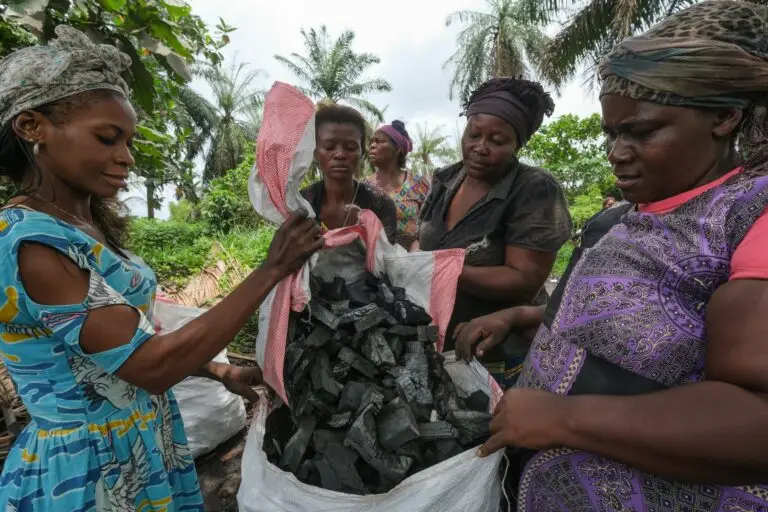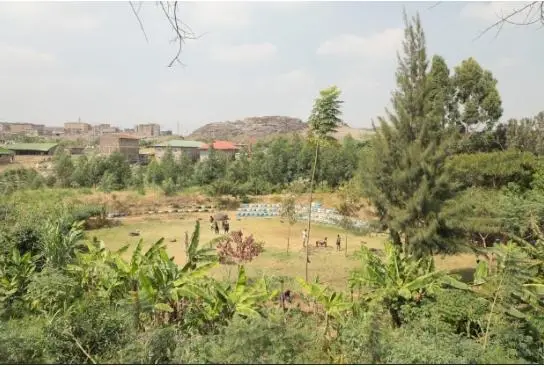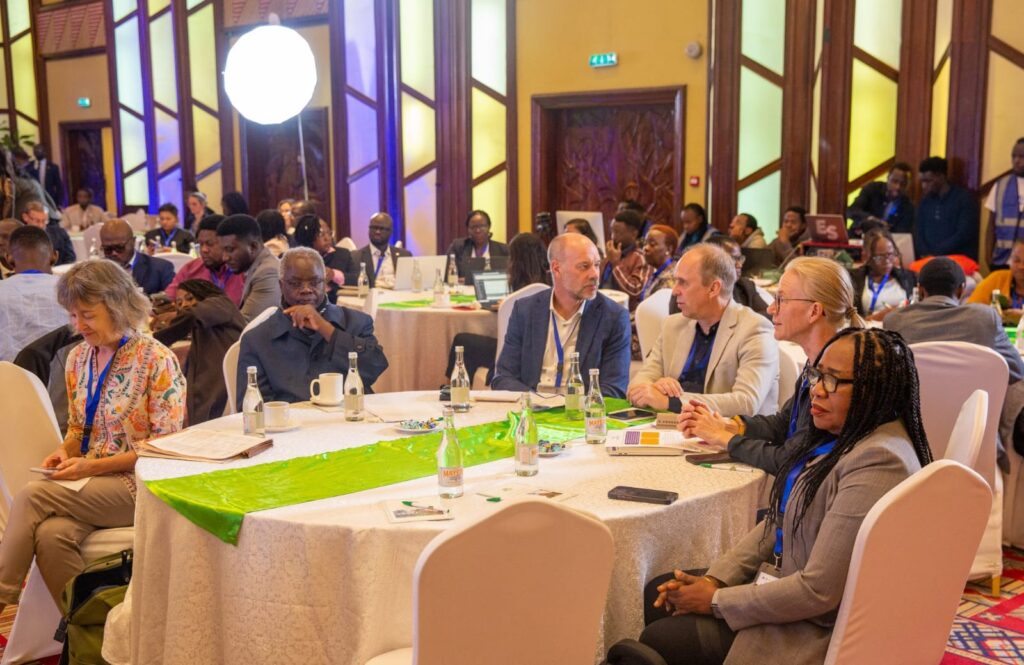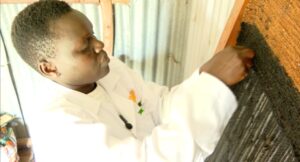
Human hair, often overlooked as a source of environmental pollution, contributes significantly to waste worldwide. Globally, salons and individual haircuts generate an estimated 0.8 to 2.2 million tonnes of hair annually, much of which ends up in landfills or is burned, releasing nitrogen compounds and toxic gases such as ammonia and hydrogen sulphide.
Hair, unlike other waste, decomposes slowly, potentially contaminating soil and water, while synthetic hair products add non-biodegradable plastics to the problem.
With its alarming threats to the environment, many environmental champions are inventing better approaches to reduce the effects through value addition and environmentally friendly disposals.
In the remote parts of Kenya, Kisumu precisely, I meet with Sarah Adero, an environmental champion – cum – businesswoman in her Wath Orego village in the Western part of Kenya.
Adero has mastered the art of creating wealth from waste. Alisam Products, a Non-Governmental Organisation that was founded by Newton Owino, is where Sarah’s creative imaginations are brought to life. She forges aesthetically appealing doormats from human hair. Driven by passion and resilience, Sarah has remained committed to this venture since 2018.
“I received a short training on waste management by HOK in Kisumu, and I got motivated,” states the jovial Adero as she is in action to meet the deadline of completing a sizeable door mat.
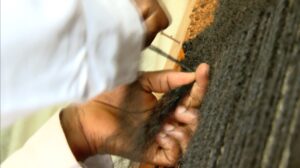
Newton Owino’s sustainability effort has been recognised by the County government of Kisumu.
Waste management has been a crisis in major towns in Kenya. In Nairobi County, for example, the incumbent governor, Sakaja, has faced multiple criticisms surrounding the filthy state of the city. In Migori County, Hoteliers called for a press briefing on 22/09/2025 to voice what they termed as a high level of untidiness around the business area.
“These dumpsites are located at the entrances of our businesses, and they scare away customers. The county government does not collect these wastes on time, yet they impose hefty charges on our businesses. These wastes are destroying our environment”, said Victor Odero, a hotel owner in Migori.
Whenever there is a heavy downpour, the uncontrollably disposed non-biodegradable wastes are swept into the water passage, and they block drainage systems. The blockade, as a result, disrupts the water flow and wreaks havoc in residential areas. Aquatic animals also suffer, as some are trapped in plastic bags and thread-like wastes such as human hair.
Sarah’s environmentally charitable act comes at a time when, according to data presented by Juliette Biao, UNEP Regional Director for Africa, Kenya emerged as a leader in the fight against plastic pollution in 2021. This followed concerted efforts to rid waterways of plastic and other non-biodegradable wastes.
In 2017, Kenya banned single-use plastic bags upon signing the Clean Seas Initiative. This placed Kenya in the limelight as one of the first African nations to commit to limiting plastics on waterways. In June 2020, all, including natives and visitors, were banned from accessing Kenya’s national parks, beaches, forests and conservation areas with disposable plastics. The above cases are just some of the stringent policies and laws that Kenya has enacted to win the fight against environmental pollution.
Despite the clearly stipulated policies aimed at combating waste disposal, the populace has been adamant, hence the rise in recycling start-ups and creativity around waste management. Hence, the rallying call for more youths to adopt climate-smart technologies as a way of tackling pollution.
“I used to wonder how the discarded hair was getting disposed of. So, I asked myself, why don’t I pick these hairs, wash and recycle them into door mats?” Said Adero, who reiterated that her outstanding weaving skills fuelled the take-off of her newfound venture.
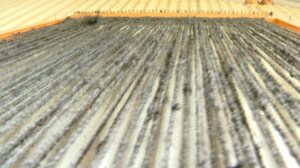
Adero states that the demand for their products grows exponentially as they deliver orders both locally and internationally. It is evidently a lucrative and environmentally friendly venture that upholds the key sustainability goals. When non-biodegradable materials are recycled into useful products for value addition, it also benefits the surroundings, as hygiene is improved, which in turn improves the climate.
Door Mart Design Process
Sarah routinely rises with the sun to set out to barbershops and salons equipped with a token in exchange for readily packed sacks of hair. The collection and sacking of the discarded hair by salon proprietors is made possible by a pre-agreement deal. Racing against time, upon picking the sacks, she rushes to litter heaps adjacent to targeted salons and barbershops to collect some more disposed hair to add to the already obtained collection. With a sack on her back, Sarah set forth for the workshop. Sometimes she hires motorcycle riders, the readily available means of transport, to ferry the stockpile to the set destination.
Upon arriving at the workshop, the sacks are emptied. The dirty hairs are dipped in water, where they are washed thoroughly with a bar soap and rinsed before drying. After drying, these hairs are stretched and sorted based on colour. Sorting is done to create an appealing colour pattern when the weaving process kicks off.
“The colour of the doormat will be dependent on the hair colours used. Some are brown, black or even grey,” says Sarah.
Next, the stretched hairs are aligned on the weaving frame. The weaving frame is a sizeable rectangular wooden design frame in the form of a door frame, fastened on the four corners with nails. Placed against the wall, the upper part of this wooden frame is hammered with protruding nails where the stretched hairs are suspended during the weaving process.
It takes between two to fourteen days, depending on the size, to complete a full design and the price ranges from Kshs 800 to Kshs 5000.
“I am always free to train whoever is interested in mastering this skill”, Sarah says. The training only takes four to seven days, depending on the level of the learner’s commitment. Her passion to train others, she says, is aimed at ensuring that all the pollutants are recycled.
Value Addition
According to the Economic Survey report that was released by the Kenya National Bureau of Statistics (KNBS) in 2025, as of 2024, Kenya’s informal sector led with 83.6% in the creation of employment, while the formal sector came last at 16.4%. Manufacturing was the leading private sector in job creation with 347,294 industries, while agriculture, forestry and fishing came second with 308,865 industries. This report shows that the leading industries in job creation are sectors that often require sustainability and conservation due to their risky nature of generating and spreading pollutants, hence the need for concerted effort and investment to combat the devastating effects. The above indicators are proof that caring for the environment comes with extensive economic and health benefits.
“Youths should look for ideas that can save the environment from pollution, and money will come. Just look around, sustainability ideas are all over”, says Sarah.
According to Sarah, these doormats are durable, and they trap dust, which causes respiratory-related illnesses like Asthma. Even more interesting, they do not need direct sunlight to dry after cleaning.
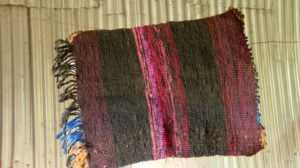
“After washing these mats and they are drenched, you will just hang them somewhere, even in the cold, and it will drip until it gets dry”, said Adero, who added that, unlike other similar products, failure to dry will not result in a bad smell.
Challenges
It is a tedious task that culminates in exhilaration as the environment is saved from pollution while the finished products are used for beautification. Sarah reminisces back in 2018 when she could walk into salons, freely, pack the discarded hairs into sacks and set off for production. Satisfied with the act which they approved of as hygienic, she recalls how proprietors would welcome her to their premises to pick the already packed hairs, a gesture that has since changed.
“The moment the salon proprietors learnt that I was profiting from these wasted hairs, they began to charge me”, said Sarah, who clarified that the charges are, however, not exorbitant compared with the benefits of saving the environment.
To meet the ever-rising demand, Adero is often forced to frequent rubbish heaps adjacent to salons to collect disposed hair. To save the environment and her business from collapse, she has to wake up very early to pick the raw materials at strategic points before they are dumped or set ablaze. The burning of these wastes releases harmful carbon monoxide into the air, a hindrance towards the realisation of net-zero emissions by 2050.
“You have to get up early before these hairs are burned”, said Sarah, who exclaimed that for environmentally-friendly start-ups like hers, it gets laborious to manoeuvre the pre-existing cultural discourse about witchcraft, a common belief in many parts of the world.
“Sometimes you show up to pick these hairs in salons, then you are turned down on witchcraft grounds,” said Sarah
“No one will allow you to collect his/her hair in the salon or barbershop. A lot of questions will be ringing in their mind, which is justified based on our superstitious culture.”, reiterated Sarah.
Such irrational beliefs have caused setbacks in her sustainability vision as she is often forced to wait longer and only sneak when the hair collection areas are less thronged. From doormats to carpets and bags, the demand for used hair is indisputably high, thanks to its enormous benefits.
Patricia’s PaTree
Still on sustainability, we meet a Kenyan climate activist and Finland award winner, Patricia Kombo. With fifty thousand plus trees planted under her campaign brand, Patree, Patricia’s focus on moderating the potential climate damages is evident.
“We foster environmental education and literacy in schools, promote sustainable land use, and help the country in attaining the 10% forest cover by planting both fruit trees and non-fruit trees”, says Kombo
Patricia’s initiative, which was founded in 2019, she says, was born out of a volunteerism campaign.
“After volunteering to visit the Northern part of the country during the Kenyans for Kenya initiative, a collaborative approach by Kenyans to support the communities that were being adversely affected by drought, I decided to start an initiative”, said Patricia.
Courtesy of Patricia’s resilience on sustainability, in 2021, she was invited as a youth speaker in the Ivory Coast and again invited as a speaker in Spain during the commemoration of the World Day to Combat Drought. In 2020, the United Nations Conventions to Combat Desertification recognised her as a land hero, and later, she was awarded as a youth of the year in Kenya in the Environment category.
With over fifty thousand trees planted, 175 events featured, 344 nurseries readied, and 15 schools visited, Patricia has vowed to soldier on.
“Youths must understand that communities are not changed by words but by action”, said Patricia
In a generation where the majority of youths are opting for white-collar jobs, a few have decided to get dirty for the sake of the environment. Small efforts like Sarah’s, Patricia’s and many others in the sustainability world have created a safe space for living. As Kenya aims for a high-quality life for all its citizens within a clean and secure environment by 2030, robust national waste management systems and concerted efforts are direly needed.

